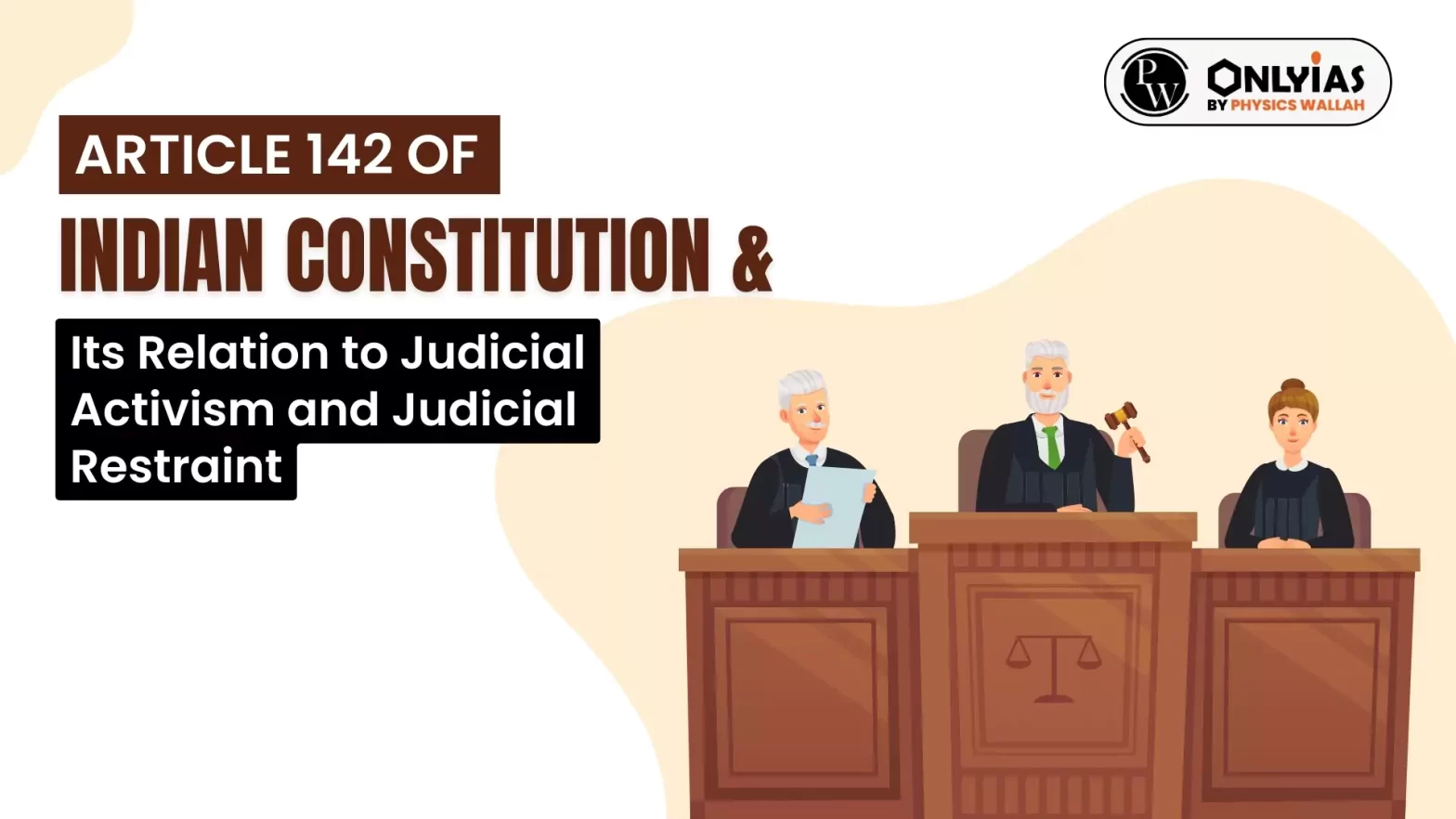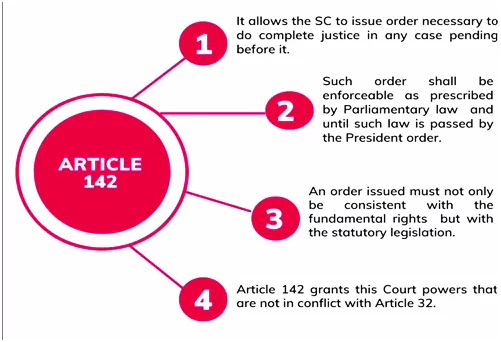
Recently, Supreme Court of India invoked the powers conferred under Article 142 of Constitution for overturning the Chandigarh Mayor election results of the Chandigarh Municipal Corporation.

| Judicial Review | Judicial Activism | Judicial Restraint | Judicial Overreach |
|
|
|
|
|
|
|
|
|
|
|
|
|
|
|
|
|
|
|
|
|
|
|
|
Article 142 remains a testament to the Indian judiciary’s commitment to ensuring justice in its fullest sense. Its judicious application is key to maintaining the rule of law and democratic ethos.
| Must Read | |
| NCERT Notes For UPSC | UPSC Daily Current Affairs |
| UPSC Blogs | UPSC Daily Editorials |
| Daily Current Affairs Quiz | Daily Main Answer Writing |
| UPSC Mains Previous Year Papers | UPSC Test Series 2024 |

<div class="new-fform">
</div>